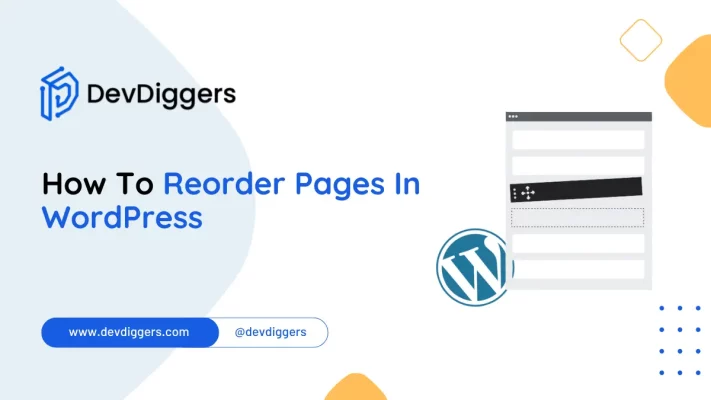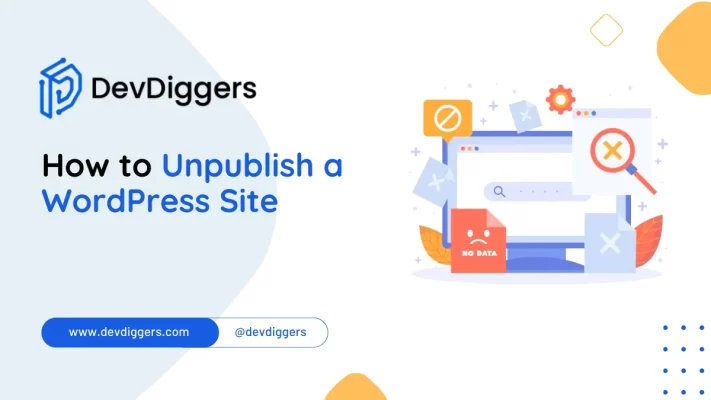How To Hide The Author On WordPress Posts
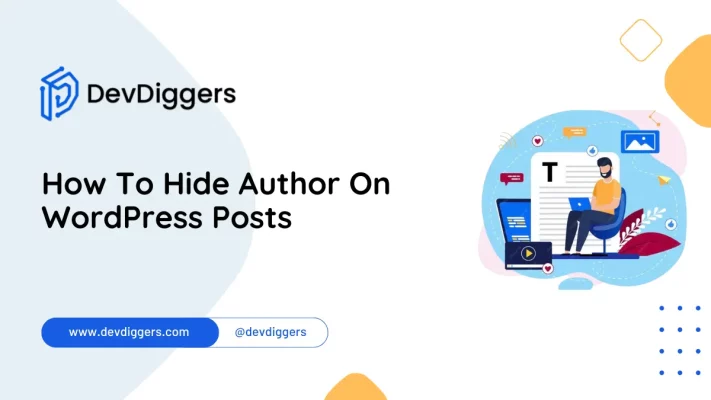
Hiding the author on WordPress posts can be a crucial step for many website owners looking to maintain a uniform aesthetic, protect the privacy of contributors, or create a more simplified, professional appearance.
Suppose you’re wondering how to hide the author on WordPress posts, whether to keep the focus on content rather than individual writers or to achieve a minimalist design.
In that case, there are several effective methods available.
In this blog post, we’ll explore various techniques on how to hide the author on WordPress posts, from simple theme adjustments to custom coding solutions, ensuring you can personalize your site to fit your specific needs and preferences seamlessly.
Table of Contents
What is an Author on WordPress Posts?

The author of WordPress posts is the individual who wrote or created the content or uploaded the images on a particular post.
WordPress posts have a designated author whose name usually appears next to the post’s content.
This feature can give the content more legitimacy and accountability by letting readers know who is accountable for the information they consume.
Reasons to Hide Author On WordPress Posts
When considering how to hide the author on WordPress posts, there are several reasons why someone might opt for this customization:
- Anonymity: People sometimes want to stay anonymous when sharing sensitive or private information.
- Brand Consistency: Hiding the author’s identity on websites with several contributors helps preserve a consistent brand voice throughout all content.
- Privacy Protection: Authors may wish to hide their private information from the general public due to privacy concerns.
- Enhanced Design: Eliminating the author’s name can make the website more straightforward and simplified, drawing the viewer’s attention to the information.
- Content Focus: By hiding the author, the emphasis is shifted to the content, enabling readers to interact with it unaffected by who wrote it.
Preparation Before Hiding the Author on WordPress Posts
Before learning how to hide the author on WordPress posts, there are a few steps you might want to take to ensure a smooth transition:
- Backup Your Site: Before making significant changes to your WordPress site, you should always make a backup. This ensures that you may quickly restore your site to its original condition if something goes wrong.
- Choose a Method: There are various methods for hiding the author on WordPress posts, such as using plugins, altering your theme’s files, or adding custom CSS. Determine the strategy to utilize depending on your technical expertise and preferences.
- Test on a Staging Site: If possible, create a staging site replicating your live site. This lets you test the changes without affecting your live site’s performance or functionality.
- Install a Plugin (Optional): If you’re uncomfortable changing code, consider using a plugin like “Hide/Remove Metadata” to hide the author on WordPress posts quickly.
- Edit Theme Files (Advanced): If you are familiar with modifying your theme’s files, you can manually delete the author information from your post templates. This usually entails changing the single.php or content.php files in your theme’s directory.
- Custom CSS (Intermediate): Another alternative is to use custom CSS to conceal the author’s information. CSS selectors can target the author’s name or bio with the show property “none.”
- Check for Compatibility: After making the modifications, thoroughly test your site to confirm that hiding the author hasn’t caused any unknown issues or conflicts with other components.
- Monitor Performance: After hiding the author, ensure your site loads swiftly and works effectively.
- Update Documentation: If you have any documentation or user manuals that mention the author, update them to reflect the changes you’ve implemented.
- Consider the SEO implications: Hiding the author may influence your WordPress site’s SEO, particularly if authorship markup was previously enabled. Make sure to check and update any applicable SEO settings or plugins.
By following these instructions, you may easily hide the author of your WordPress posts while reducing any potential negative consequences for your site.
How To Hide The Author On WordPress Posts
Method 1: Using a Plugin
Log in to your WordPress Dashboard to learn how to hide the Author on WordPress Posts.
Navigate to Plugins > Add New and look for a plugin named WP Meta and Date Remover or Hide/Remove Metadata” and Install and activate the plugin.
When the plugin is activated, all meta information is automatically removed.
Two methods are used to delete the data: CSS to hide it on the front end and PHP to remove it on the back end.
The second option specifies that the metadata is no longer visible to search engines, and you may use either method.
Method 2: Using Custom CSS
The next step to hide the author on WordPress posts is to add the custom CSS code. To do so, navigate to Appearance > Customize and select Additional CSS.
.entry-meta .byline,
.post-meta .byline,
.post-author {
display: none;
}
This code focuses on common class names used by themes for author information. Adjust the class names as needed based on your theme’s HTML structure.
Method 3: Use a Generic Author Name
Using a generic, non-revealing name rather than completely removing the author’s identity from your blog postings is sometimes a better choice.
This strategy is especially useful for articles written by people, such as an editorial team or freelancers, who all have a unique and consistent writing style.
Maintaining a consistent writing style makes the absence of a certain author less noticeable.
Click Users → Add New in the WordPress dashboard to add a generic name. Create a new username, fill in the relevant details, and select the user role. Click the Add New User button.
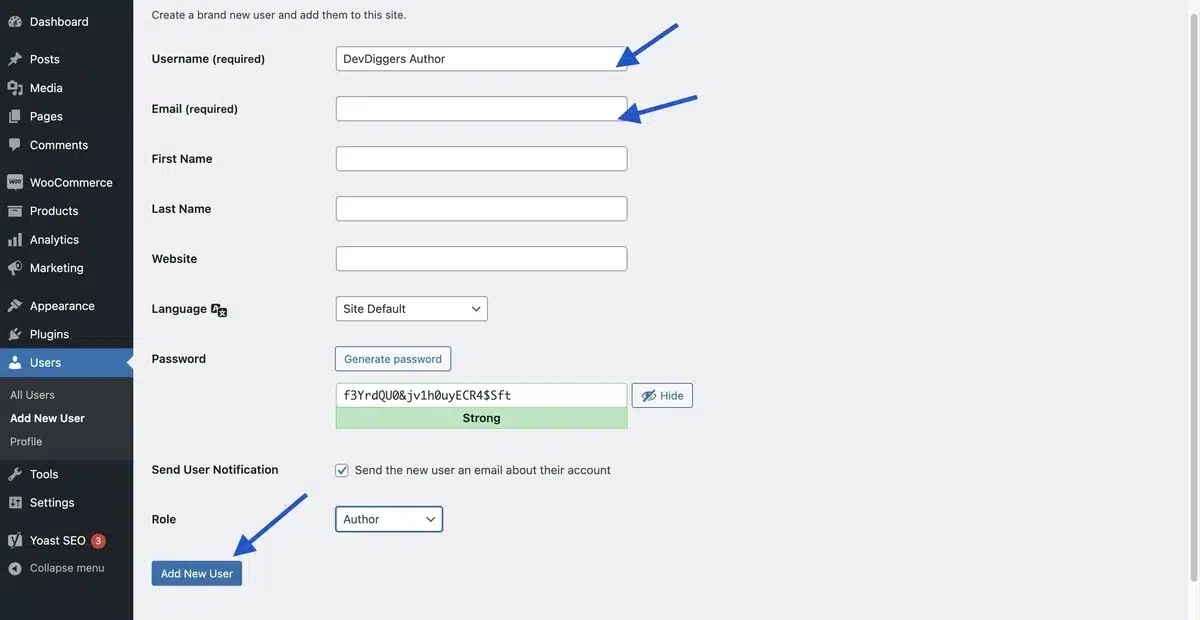
Next, go to Users and choose All Users. Click Edit next to the newly formed username, as seen below.
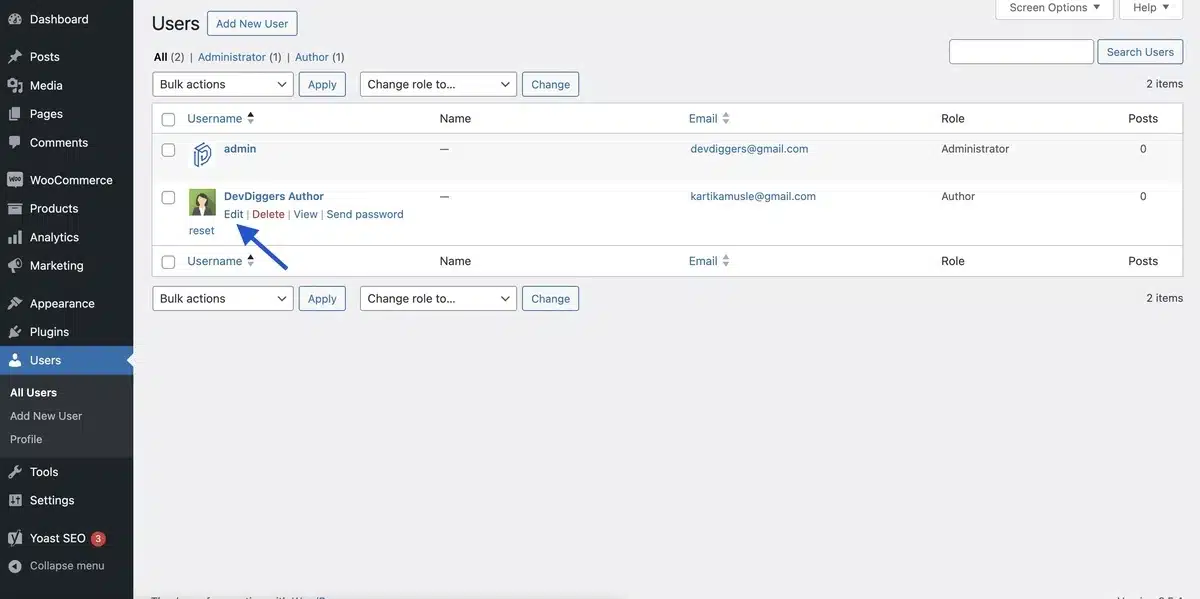
Enter the nickname you want to be shown on your postings. Then, choose the nickname you created using the Display name publicly drop-down menu.

Once completed, click the Update User button to save your changes. You can now use this name in your posts.
Conclusion
Understanding how to hide the author on WordPress posts can be simple if you follow the proper steps.
There are several methods for giving your blog or website a clean and professional appearance, including installing a custom theme, a plugin, or manually altering the code.
By learning the various ways available, you may select the one that best meets your requirements and technical capability.
Remember that while hiding the author may be required in certain cases, you should always evaluate the influence on your content’s trustworthiness and transparency.
With the appropriate technique of how to hide author on WordPress posts, you can keep your site looking polished while also meeting your individual requirements. Happy blogging!
FAQs
Will hiding the author affect my SEO?
Hiding the author’s name itself does not significantly impact SEO. However, author visibility can influence credibility and user trust, which is indirectly beneficial for SEO. Consider the implications before hiding the author’s information.
Can I hide the author on specific posts only?
Yes, you can target specific posts by using conditional tags in your theme’s code or by applying custom CSS classes to individual posts. Some plugins also allow you to control visibility on a per-post basis.
How do I hide the author’s name in the WordPress Block Editor?
The Block Editor (Gutenberg) has no built-in option to hide the author’s name. You will need to use CSS or a plugin to achieve this effect.
Will hiding the author affect user engagement?
This depends on your audience. Some readers prefer to see the author’s name for transparency and credibility. Consider your audience’s preferences and test the impact of hiding the author before making it a permanent change.
Can I hide other post metadata along with the author’s name?
Using similar methods, you can hide additional metadata, such as the publication date, categories, and tags. Plugins that hide author names often allow you to hide other metadata, or you can use custom CSS and theme code edits.


